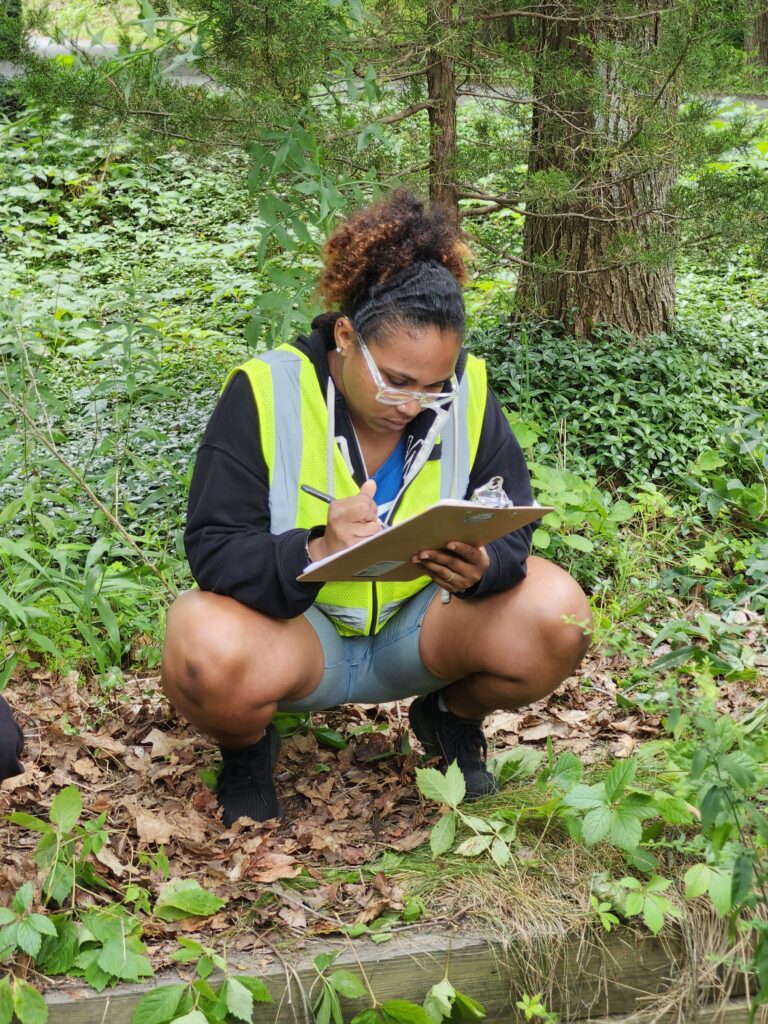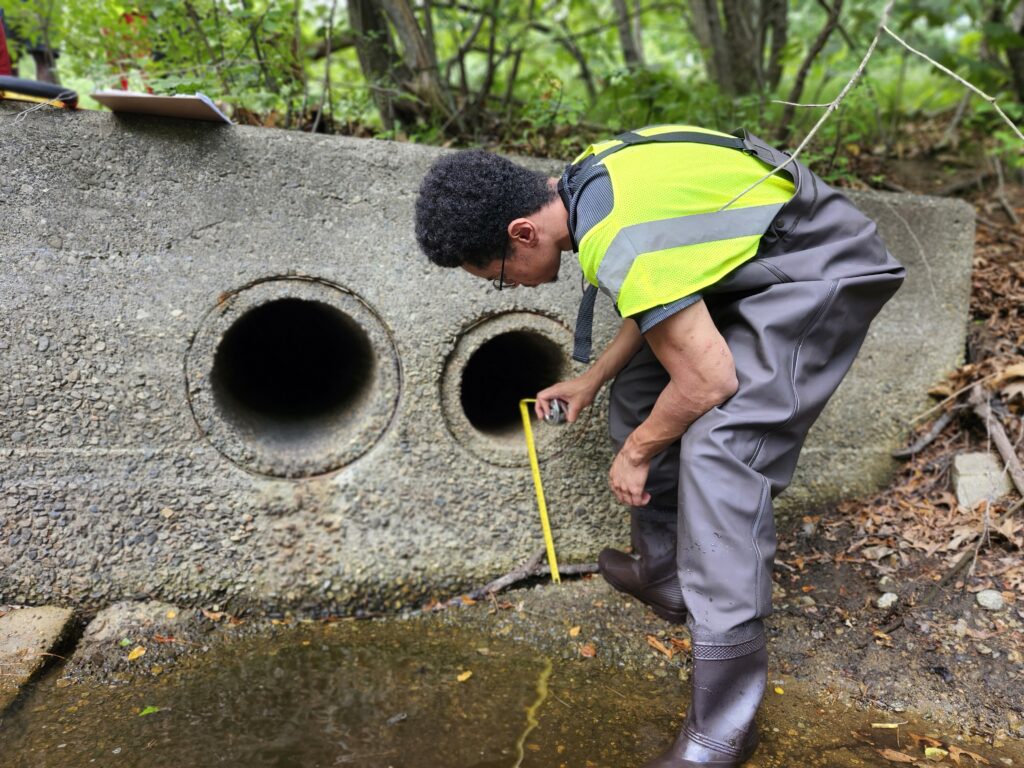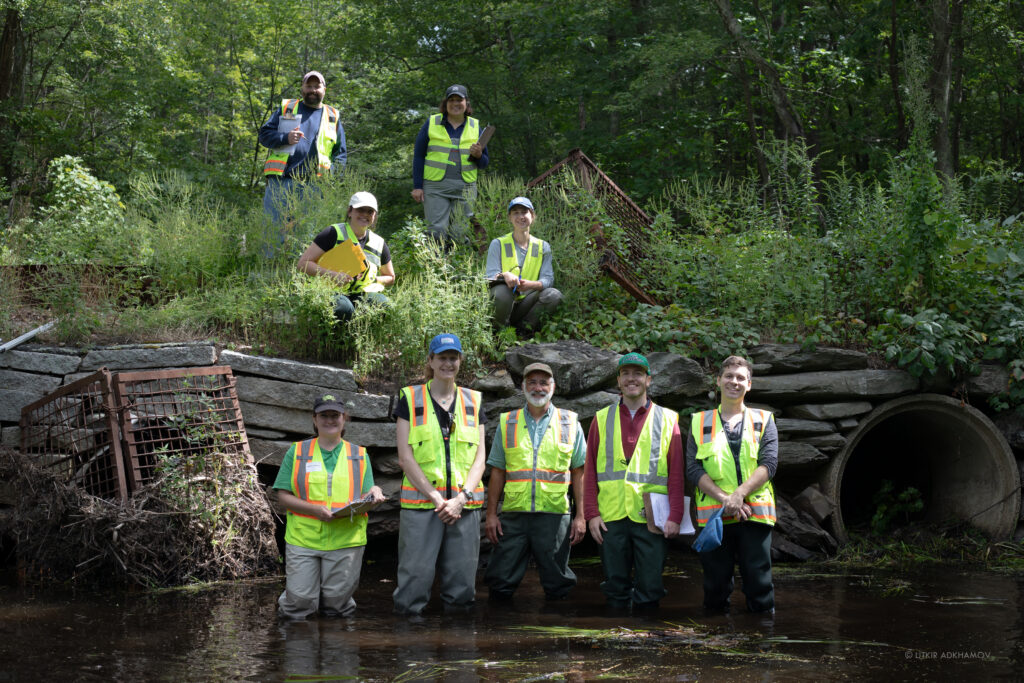Culverts, Streams, and Spiders, Oh My!
October 10, 2025
OARS River Log | By Heather Conkerton, OARS’ Ecological Restoration Coordinator | Published Oct 10, 2025
This summer, OARS has been building real momentum around culvert assessments in the SuAsCo watershed. In partnership with X-Cel Conservation Corps, we performed assessments in the Town of Maynard, expanding our network of trained volunteers and helping communities better understand the health and connectivity of their local waterways. By improving culvert infrastructure and restoring natural flow, we are safeguarding both the rivers themselves and the aquatic life that depends on them. This work is key to maintaining biodiversity and improving water quality for both people and wildlife.


We’ve also been collaborating closely with fellow watershed organizations, lending a hand with their assessments and gaining valuable support for our own. We truly love working together and expanding our skills. This past summer, we had the opportunity to participate in a Terrestrial Connectivity training module led by Scott Jackson, which further strengthened our expertise and understanding.

Our commitment doesn’t stop at volunteer assessments. Earlier this summer, our Ecological Restoration Coordinator and Water Quality Program Manager presented at a DER Culvert Replacement Training in Hopkinton, sharing their expertise with municipal officials. These officials play a frontline role in upgrading culverts to handle larger storms and flooding while ensuring fish and wildlife can move safely up and down streams. We hope to continue this collaboration, helping towns prepare for a changing climate and the infrastructure challenges it brings.
As part of this effort, OARS will be holding a culvert assessment training in November. We’re looking to grow our team of trained Lead Observers—volunteers who can help identify vulnerable culverts, track conditions over time, and contribute to climate-smart watershed management. Are the culverts in your town ready for the storms ahead? With more volunteers and trained observers, we can help municipalities take action before flooding and habitat disruptions occur.
If you’re interested in learning more or becoming a trained lead observer, stay tuned for details on upcoming trainings, and join us in building a stronger, more resilient watershed for people and wildlife alike.

